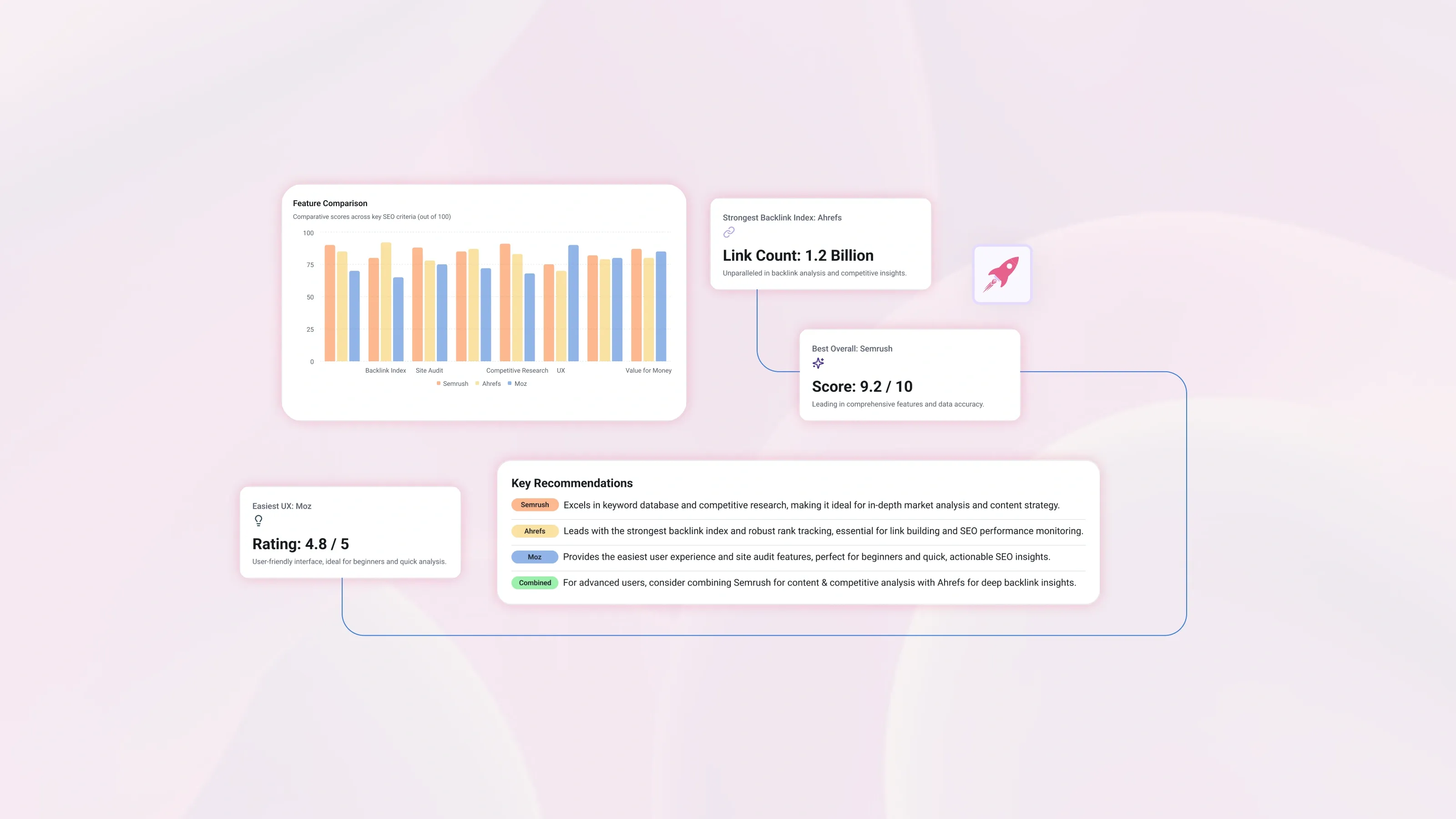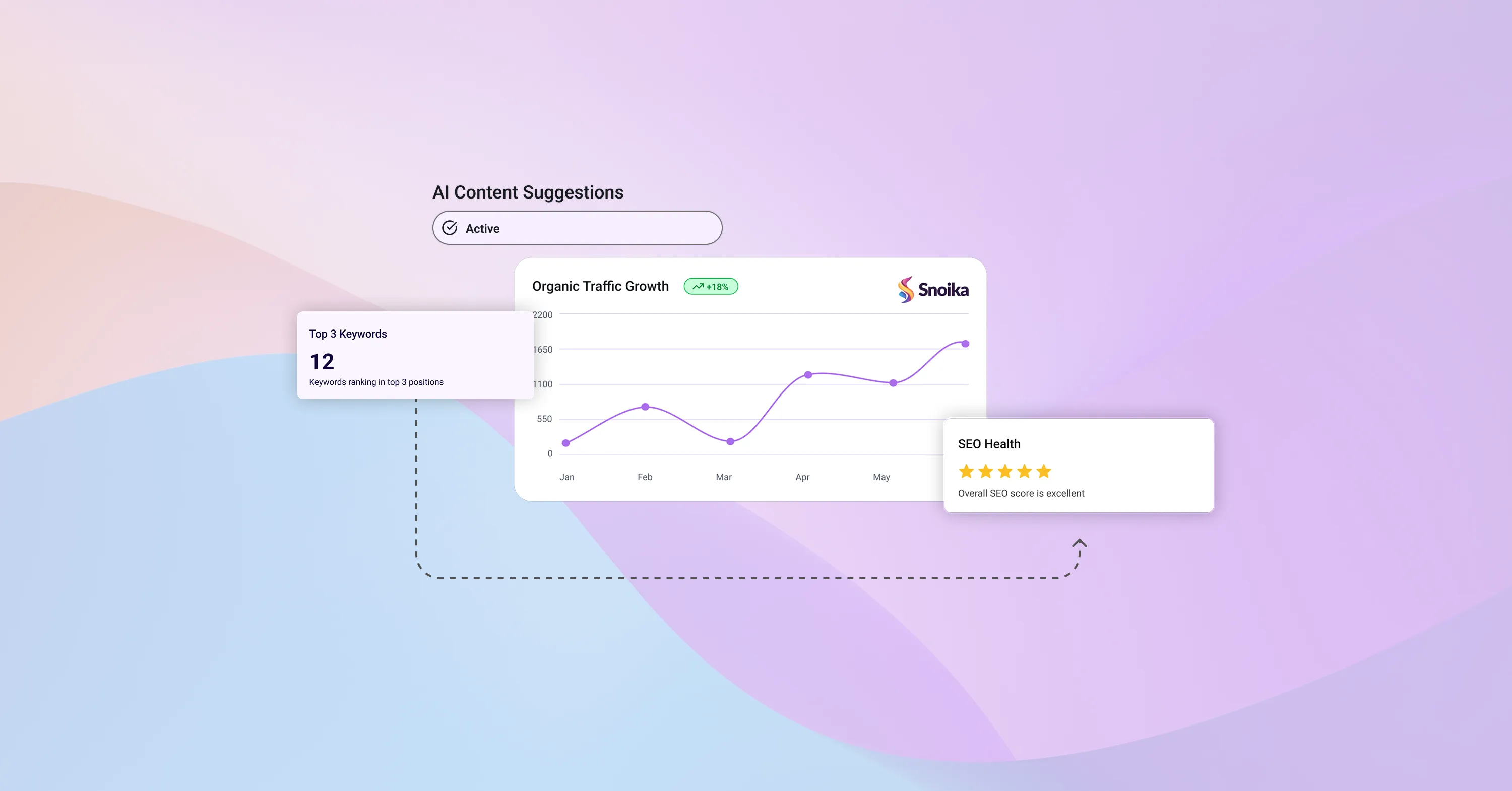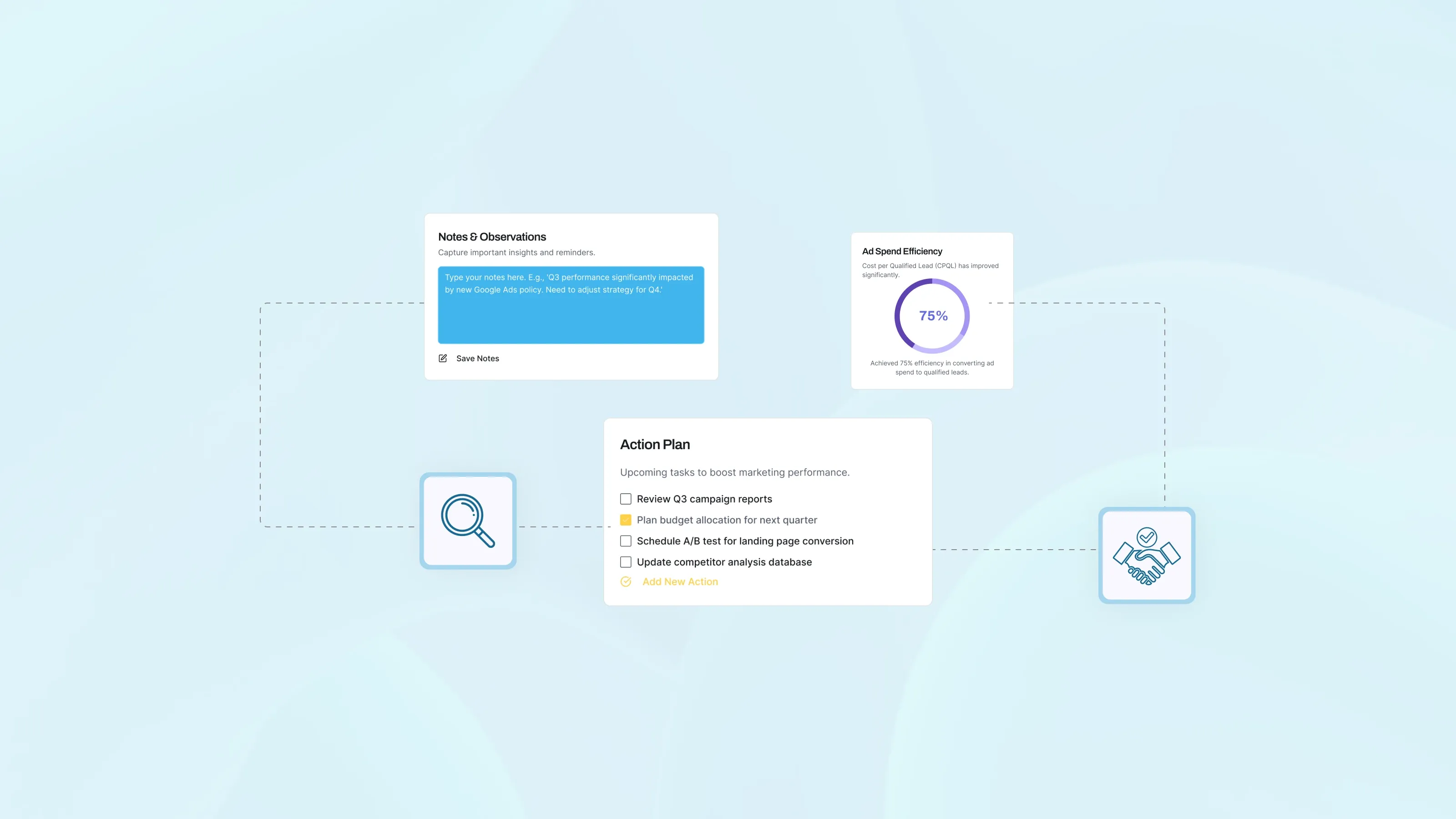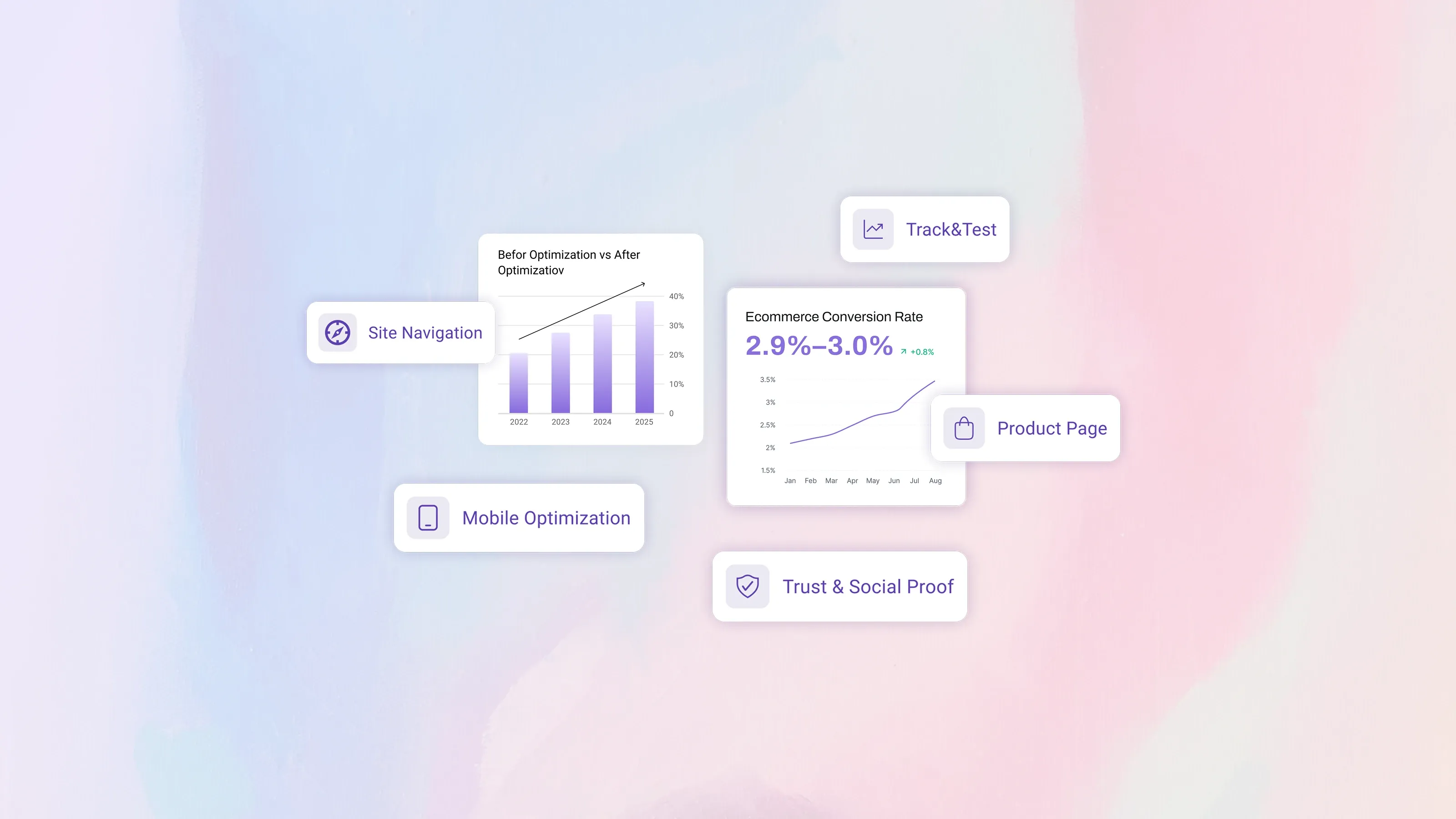Overview
Getting more traction on search engines often comes down to using the right SEO tools. They help with keyword research, highlight website improvements, and boost visibility against competitors. This guide shows step by step how to analyze keywords, improve website ranking, and track performance. Whether you run a personal blog or manage multiple e-commerce sites, a clear SEO workflow reduces guesswork and frees time for creative growth.
Step 1: Pick a Solid Foundation for Website Ranking
Before testing advanced tools, it helps to start with an all-in-one platform that covers fundamental SEO tasks. Many professionals use Google Analytics or its newer version, Google Analytics 4 (GA4), to watch their visitor behavior. But for modern founders and teams looking to move faster, solutions like Google Search Engine Optimization That Works Like an AI Growth Team streamline research, site audits, and content planning in a single dashboard - combining strategy, analysis, and optimization with AI.
- As of April 2022, a report indicates that Google Analytics was used by 73.7% of the top 10,000 websites.
- GA4, released more recently, is found on about 13.5 million websites as of August 2023.
Practical Setup Tips
- Connect Google Analytics 4 (GA4) to your domain to start collecting visitor data.
- Review traffic sources to understand where your audience is coming from. A high bounce rate or low engagement can hint at content or targeting mismatches.
- Explore GA4’s Path Exploration (user flow reports) to see how visitors move through your site and which pages keep them engaged the longest.
With these free core insights, you’ll have a strong foundation for deeper SEO improvements such as content optimization, keyword targeting, and conversion tracking.
Step 2: Understand Keyword Analysis to Improve Your Presence
Keyword analysis helps align your content with real search intent. It won’t bring instant results, but it builds a strong base for growth.
Quick process:
- Brainstorm topics that reflect your service or blog.
- Check search volume, difficulty, and intent with tools like Semrush or Google Keyword Planner.
- Refine by removing irrelevant or low-value terms.
For step-by-step guidance, see Find the Right Keywords in Minutes – Not Hours – SEO Optimisation Made Easy, which covers AI-powered research, competitor checks, and ongoing optimization.
Keyword Analysis Example
If you run a travel blog, you might test terms like “budget travel tips” or “family vacation ideas.” Check their monthly search volume and update your list regularly, since trends change over time.
Step 3: Step 3: Explore the Top Platforms for Different Needs
Different platforms serve different parts of your workflow - from competitor research to technical audits. A smart mix helps you balance content strategy with site health.
- Semrush - Strong in keyword and competitor analysis (Statista).
- Ahrefs - Well-regarded for backlink data and content gap checks (Search Engine Journal).
- Moz Pro - Reliable for site audits and rank tracking (Moz Blog).
- Screaming Frog Spider - Popular for technical SEO and broken link detection (Search Engine Land).
According to HubSpot, over two-thirds of marketers use automation tools to streamline reporting, audits, and optimization.
Ways to Streamline Your Strategy
Platforms simplify your workflow by analyzing keyword data, highlighting on-page improvements, tracking backlinks, and generating automated reports. With consistent use, you get a clear roadmap to connect with your target audience more effectively.
Step 4: Compare Keyword Analysis Tools Side by Side
Once you test more than one platform, it’s useful to compare how each handles keyword research, backlink data, and site metrics.

Each has different strengths:
- Semrush - The Keyword Magic Tool lets you explore and group keywords in bulk. Its Site Audit reports highlight technical and on-page issues with detailed recommendations.
- Ahrefs - Well known for its large backlink index and a Content Gap feature that shows which keywords competitors rank for but your site does not.
- Moz Pro - The Keyword Explorer provides a clear scoring system (volume, difficulty, CTR, and “Priority” score) to help evaluate terms. Its on-page grader offers optimization suggestions, though many fixes still need manual work.
For deeper insights into building authority clusters and automating semantic keyword research, see 10 SEO Best Practices for 2025: How to Rank Higher on Google.
Checking Accuracy and Data Freshness
Accurate data can determine whether a page succeeds or fails. Semrush updates most rankings daily, Ahrefs refreshes every few days, and Moz Pro usually once a week. If metrics are outdated, you risk focusing on the wrong keywords and missing fast-moving trends, so always check how often your platform updates its data.
Step 5: Automate Core Tasks and Free Up Your Time
Automation is rapidly growing, with the market projected to reach $1.5 billion by 2028 (MarketsandMarkets). Many companies already invest thousands monthly in platforms that cut repetitive work.
While automation can’t replace strategy, it frees time for higher-value work like content creation and outreach (HubSpot).
Step 6: Use SEO Tools Effectively for Content Creation
- Content quality drives visibility - Optimized, well-structured articles tend to rank higher (Backlinko).
- Add semantic depth - Including related terms and context improves relevance (Search Engine Journal).
- Check competitors - Analyzing how others cover a topic helps you create more detailed and useful material.
- AI-driven workflows - For step-by-step guidance, see “How to Master AI Content Creation in 7 Simple Steps” and Find the Right Keywords in Minutes – Not Hours – SEO Optimisation Made Easy to streamline your process.
Avoiding Over-Optimization
Stuffing keywords can harm your ranking. Aim for a natural flow and keep an eye on suggested keyword density. Also, keep your paragraphs short for an easier read.
Step 7: Track Progress and Refine Your Approach
- Run regular audits - Tools like Screaming Frog or Moz Pro help detect broken links and duplicates.
- Monitor rankings - Track how your target keywords move over time.
- Check engagement - Look at time-on-page and clicks to see what resonates most.
- Use automation - Over 80% of SEO professionals say automation helps scale strategies (HubSpot).
For an all-in-one option, see Elevate Your Strategy with Snoika’s SEO Analyzer. Even small insights can lead to meaningful improvements.
Conclusion
SEO tools give you clarity and save time on tasks that often feel overwhelming. Whether you’re comparing keyword analysis solutions, running site audits, or checking your website ranking, the right platforms can help you spot issues before they harm your traffic. Keep your content engaging, measure results regularly, and refine based on your reports. If you do that, you’ll stand a better chance of keeping your site on a strong upward path in search results.







